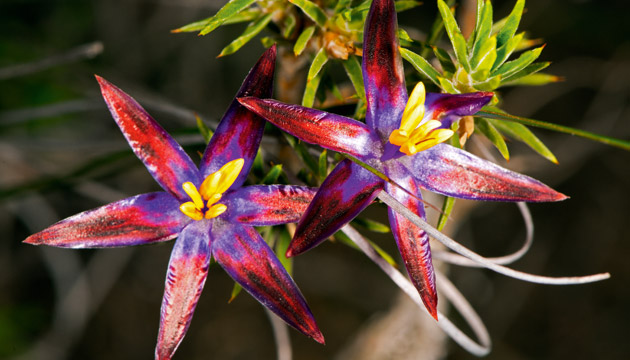Every year in September, Western Australia's south-west puts on a botanical spectacle that lures visitors like bees to nectar.
Story and photos by Don Fuchs
Dianne Burton is one of 30 licensed pickers who collect wildflowers for the Annual Flower Show in the small wheat town of Ravensthorpe, WA. Today she is up in the Ravensthorpe Range, armed with secateurs and a bucket. The range consists of the oldest rocks along the south coast of Western Australia. The ancient rocks are highly mineralised and their specific geological make-up has caught the attention of the mining industry. But it’s not what’s in the ranges that Dianne is interested in – it’s what’s on them.
“I’m trying to find the qualup bell,” she says. “This beautiful flower is quite common in the coastal plains but rare up here.”
Along an overgrown side track Dianne finds another rare plant, Banksia foliosissima, a small dense shrub that looks like a tangled ball of foliage. Its large golden flowers are hidden within a mass of serrated leaves. “This is one of the plants I can’t pick,” she says. “With the licence, they give you a long list of rare and endangered flowers that are out of bounds.” This banksia and the qualup bell are just two of the many prized plants people come to see in the Ravensthorpe Range during wildflower season.
The range forms part of the Fitzgerald Biosphere Reserve, a 3300-square-kilometre area contained within Fitzgerald River National Park. (Unfortunately the eastern part of the park is closed for the foreseeable future due to a damaged bridge over the outlet of the Culham Inlet.) This biodiversity hotspot has more plant species than almost anywhere else on Earth.
Ravensthorpe is the gateway to this extraordinary region. Every year, during the Wildflower Festival, the town becomes a destination for flower-loving pilgrims.
Their pilgrimage usually begins in Perth and leads through the southern Wheatbelt towards the south coast.
This story excerpt is from Issue #110
Outback Magazine: Dec/Jan 2017










